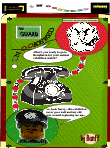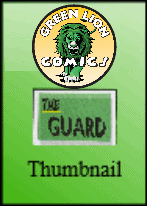
****LEGOŽ is a trademark of the LEGO Group, which does not sponsor, authorise or endorse this web site. Visit the official LEGO website at http://www.LEGO.com.****

Guard Story No.1 - - Snookered. (Published June 2013).
***Please note that I am using a standard thumbnail image for all the full size pictures on this page. This is purely being done to save myself sometime.***
 page one.  page two.  page three.  page four.  page five. |
So, what have I learned with my first story?
D.W. Griffith, an early pioneering Hollywood silent film director was another at the top of his profession. He too like Eisner worked under pressure to produce numerous silent films. If you think about any early silent film you may have seen, you may recall the main actors usually stood in front of a rigid background with nothing going on behind them. Griffiths was the first person to come up with the idea of movement behind the main actors. That is, extras walking behind the main actors in the background. This is today a common feature in TV programmes and films. Such a simple idea, but very effective. This is just one small example of a Griffith idea to make films more watchable and interesting. So sometimes working under this type of pressure seems to produce ideas in people's minds, that might otherwise not be explored.
Good points about the story. I'm quite pleased with the splash page and the fact that the story works. [The story had been percolating in my mind for months!] I explained most things, introduced the hero, made use of events, people introduced early in the story, later on. It's a fairly humorous story and the marrying of railway and snooker ideas seems to have worked. Also pleased that I have used a variety of close up, medium and long shots of the characters against varied backgrounds throughout the story.
Things to remember - leave space for the word bubbles and probably loads of other things I don't even know about!
 |